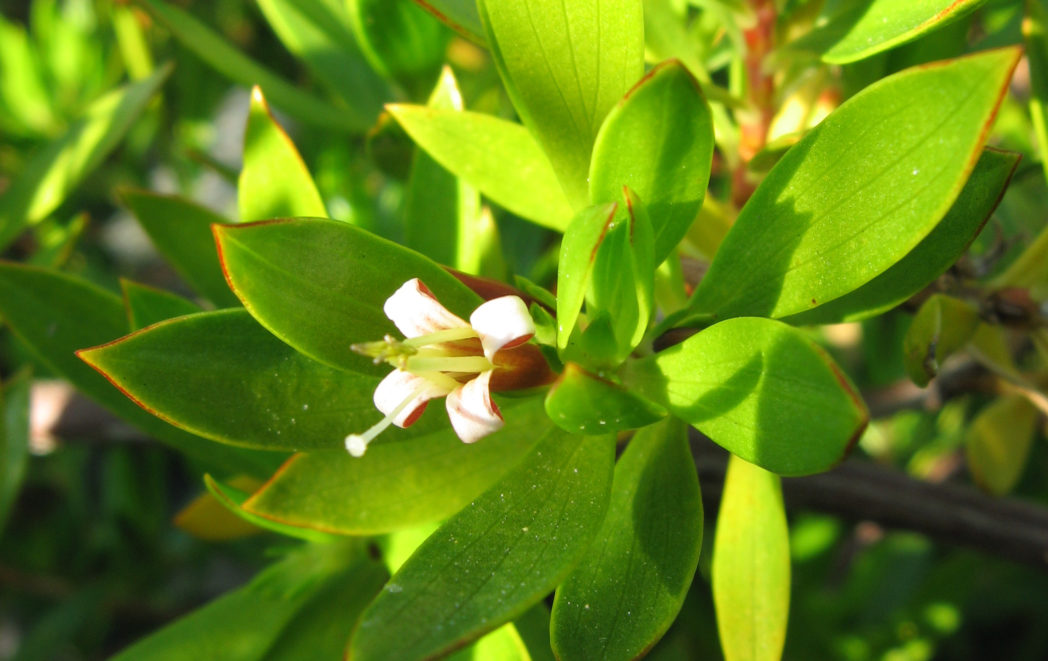Beach creeper
Pictured above: Beach creeper (Ernodea littoralis) by Jenny Evans (CC BY-NC 2.0). Click on terms for botanical definitions. View post as a PDF.
Also known as Golden creeper and Coughbush, Beach creeper (Ernodea littoralis) is an evergreen low-growing, mat-forming shrub found on dunes, beaches and coastal hammock edges throughout Central and South Florida. It produces flowers and fruits year-round. The nectar attracts butterflies and hummingbirds, while the berries provide food for birds and small wildlife.
The pink to pinkish-white flowers are sessile and axillary. Corollas are long (½-inch) and tubular with four recurved lobes. Leaves are lanceolate to elliptic and fleshy with entire margins and bowed veination. They are oppositely arranged. Stems are woody and reddish with curving branches. Fruit is a round to oval golden-colored drupe containing a single seed.
Family: Rubeacea (Coffee, madder or bedstraw family)
Native range:Coastal counties from Volusia south to the Keys, and Pinellas and Hillsborough south to Monroe mainland
To see where natural populations of Beach creeper have been vouchered, visit florida.plantatlas.usf.edu.
Hardiness: 9B–11
Lifespan: Perennial
Soil: Well-drained, moist to dry sandy or calcareous soils
Exposure: Full sun to light shade
Growth habit: 1–2’ tall, 3–6+’ wide and spreading
Propagation: Seed, cuttings
Garden tips: Beach creeper makes an interesting groundcover, especially in hot, dry areas where other plants may struggle to survive. It is relatively maintenance-free but may be pruned to keep it at a particular size. The plant is drought-tolerant and can persist for many years. It is also great for erosion control.
Beach creeper is often available from nurseries that specialize in Florida native plants. Visit www.plantrealflorida.org to find a nursery in your area.

